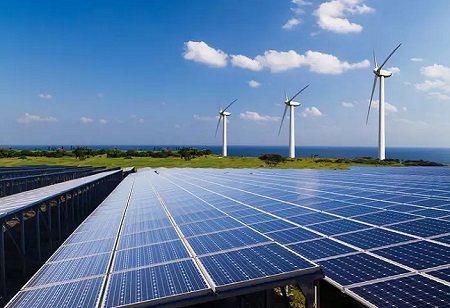Public sector oil major Bharat Petroleum Corporation Ltd (BPCL) has signed a memorandum of understanding (MoU) with the government of Odisha for exploring the feasibility of setting up a green energy plant in the coastal state.
An agreement to this effect was signed between Bhupendra Singh Poonia, Managing Director, Industrial Promotion and Investment Corporation of Odisha Ltd (IPICOL), and Amit Garg, Executive Director (Renewable Energy), BPCL on Monday. Under the MoU, the state government will collaborate with BPCL in the fields of the feasibility of setting up a renewable energy plant (both for domestic and overseas customers), round the clock (RTC) power for consumers, and proposed green hydrogen plants, setting up of requisite infrastructure, training, and knowledge sharing, etc.
BPCL plans to set up an overall renewable energy capacity of 10 gigawatts comprising a mix of solar, wind, small hydro, and biomass by 2040 at an investment of Rs 25,000 crore.
The move aims significance as the government of India has set a target to achieve 500 GW of renewable energy generation capacity by 2030, the target which was set at 450 GW at the COP26 and was revised upwards later. The revised target of non-fossil fuel capacity is expected to meet at least 50 percent of India’s electricity demand by 2030. India’s non-fossil fuel capacity target is ambitious but achievable with aggressive investment from large corporations like BPCL.
“Green hydrogen energy would help the industries to cut aggregate emissions of Green House Gases and thus, contributing to the overall objectives of the government of India’s Intended Nationally Determined Contribution (INDC),” said a statement from IPICOL.
Odisha is one of the few power surplus states in India. Still, the state wants to ramp up green energy generation in coordination with large corporate like BPCL which will supplement its growing power demand from the existing and proposed industrial units.
“Despite being a power surplus state, we are looking to further strengthen our position in power and these upcoming plants will help Odisha-based heavy industries to supplement their growing power requirements,” the statement added.
Suresh Chandra Mahapatra, Chief Secretary, Government of Odisha, said, “We have huge natural resources and due to expanding steel making industry, green energy is a big prospect in Odisha. The state has a high potential for the production of green energy from ethanol, solar, and hydrogen. Also, we have major ports and developing new ones, which will help BPCL to export the green hydrogen and ammonia to other countries.”
Mahapatra assured BPCL to provide the oil major with all possible support in its feasibility study on green energy projects from grounding to commissioning. Development Commissioner Pradeep Jena termed this as a momentous occasion when a company like BPCL has joined hands with the state government for the production of renewable green energy.
“As a leading state in metal and petrochemical investment destination, Odisha would like to produce and utilize more of green energy in different sectors for arresting the carbon footprints,” Jena added.
Speaking on the occasion, Hemant Sharma, Principal Secretary – Industries, said, “Today, Odisha is the single largest producer of steel in India. More than 33 percent of India’s overall steelmaking capacity exists today in Odisha which makes the state the primary prospect of green hydrogen and green ammonia. Because of the value addition policy, the demand is only going to increase in the future.”
Emphasizing the growing demand for green energy, Arun Kumar Singh, Chairman and Managing Director of BPCL, said, “Odisha figures out in its innovative ventures. Many parts of Odisha have great potential for production of solar and green-based ethanol energy.”
“BPCL aspires to be the world’s most admired energy firm by combining skill and technology. Given our pursuit of customer service quality excellence, we at BPCL aim to achieve a net-zero, in Scope I and II emissions by 2040,” Singh added.
At the COP26 summit in Glasgow in 2021, India accounted a new climate action target with commitments to installing a non-fossil fuel electricity capacity of 500GW by 2030, sourcing 30 percent of energy requirement from renewables by this period, reducing 1billion tonnes of projected emissions from now till the end of the current decade, achieving carbon intensity reduction of 45 percent over 2005 levels by the end of 2030, and achieving a net-zero discharge by 2070.
